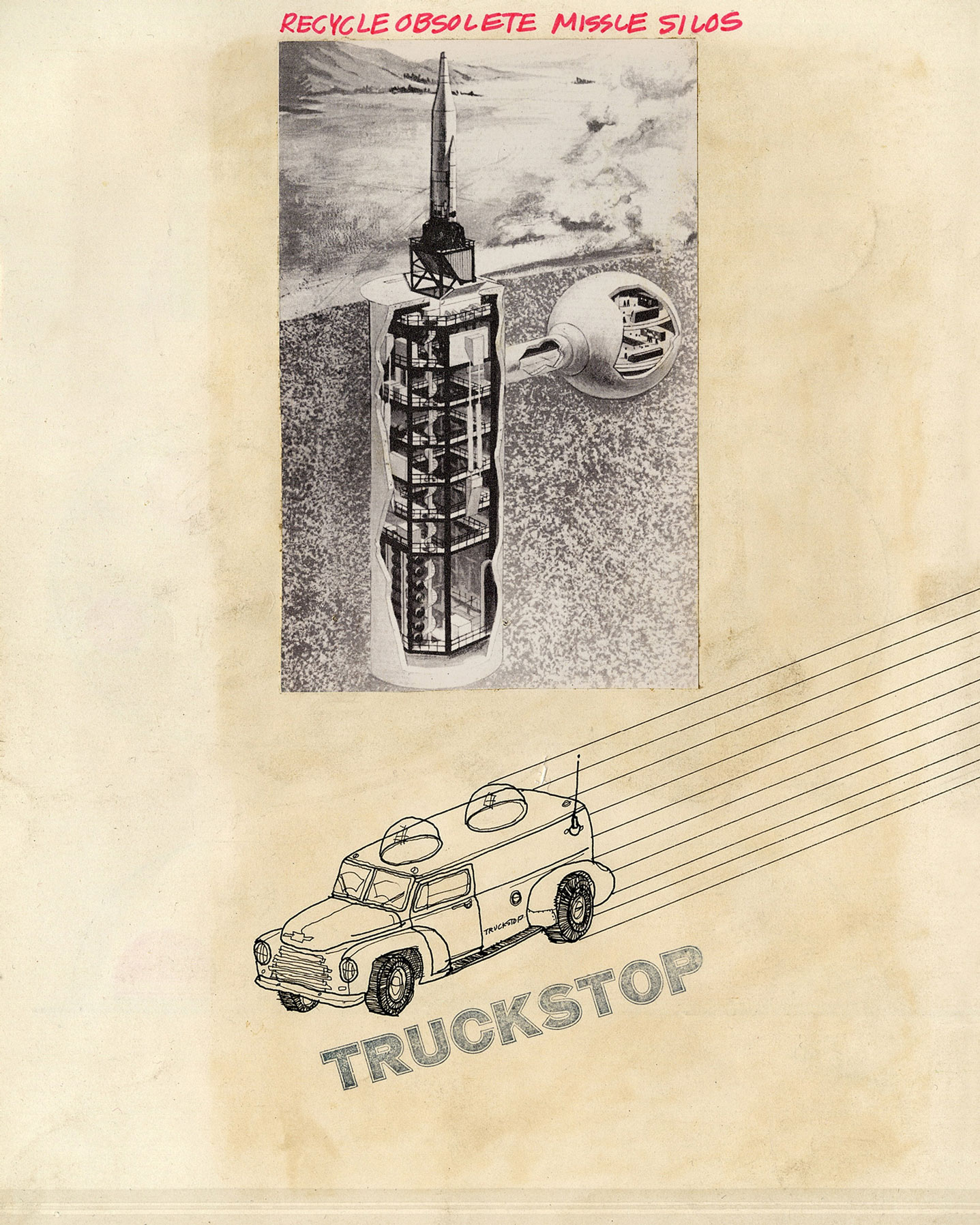Ant Farm Underground
Recycling silos
Mark Wasiuta

The radical architecture collective Ant Farm began as a form of “underground architecture” in touch with other “underground” cultures of San Francisco in the late 1960s. The green plastic Ant Farm toy fabricated by Uncle Milton Industries—“a living TV screen” of industrious ants—was enlisted as a motif for their work and served as an easy analogy.
This relatively simple, jesting formulation of Ant Farm’s underground was soon displaced by more complex projects such as time capsules, which took the form of sealed refrigerators, or automobiles wrapped in tar and buried underground. Archiving contemporary artifacts and technologies to be released into a near future, these capsules illustrated the divergent temporalities of Ant Farm’s work, in which “before” and “after” were placed in an intricate feedback loop that would produce new spaces and forms of mobility—ones in which “cowboy nomads” would set up around “electric campfires.”
“Recycle Obsolete Missile Silos” is taken from a series of drawings for Ant Farm’s Truckstop Network, an expansive project that scouted the existing American interstate highway network and proposed alternate modes of occupying its infrastructure. Mobile communities, linked through an electronic network and equipped with new tools and media technologies, would displace the old and the obsolete. For example, the existing commodity system and carbon fuel culture would be replaced by an emerging ecologically oriented economy that would circulate “energy credits” in place of dollars.
The doubling of these networks—simultaneously tracing and erasing them—honed in on the obsolete military infrastructure of America. “Cold War Surplus” sites, identified on the group’s Truckstop Network Placemat, registered a system that was then being rewritten, or recoded, through an expanding computerized military network and its underground command centers. Already by the mid-1960s, the US military had begun building silos for its new, solid-fueled missiles, abandoning the older silos of the liquid-fueled missiles of the Atlas program. Each obsolete silo was itself a time capsule—a repository of old technologies, the residue of incessant investment in the transformation of the American military landscape.
This proposal for a “recycled” silo articulates Ant Farm’s environmental leanings, obliquely linking Truckstop Network to the buried houses and recycling strategies of various other early 1970s ecological design practices. The drawing also recycles earlier conceptions of the Cold War underground: an underground of suburban backyard bunkers; the not-yet obsolete anxieties that circulated around missiles; and life adapted to the spaces of a militarized culture. At the same time, this recycling insists on a more complicated condition: a present in which we are found “living among technological ruins” reinscribes these obsolete networks into another future but is nonetheless constrained by the organization and logic of these outmoded systems and technologies. The project claims radical possibilities for new occupation while marking the limits of the utopian reconfiguration of these networks.
Mark Wasiuta is a doctoral candidate at Harvard University. He teaches at Columbia University in the Graduate School of Architecture, Planning, and Preservation, where he is also Director of Exhibitions.